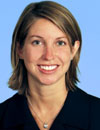You don’t often hear about how much older adults contribute to society. That’s a shame.
It allows the aging of American to be portrayed as a story of dependency: the reliance of the old upon the young. Instead, the truth is that the generations are inter-dependent, each benefiting the other.

Antonucci

Olshansky

Zissimopoulos
This was one of the themes articulated during AHCJ’s recent webcast with three members of the MacArthur Network on an Aging Society, a group of prominent academics exploring the opportunities as well as the challenges associated Americans’ increased life spans.
Julie Zissimopoulos, associate director of the Schaeffer Center for Health Policy and Economics at the University of Southern California, described a framework for understanding how much support older adults get and how much they give in turn. (Resources and PowerPoint presentations from the webcast are available here.)
In the “here’s what they get” column, she put government health programs such as Medicare and Medicaid, Social Security, benefits from the department of Veterans Affairs, food stamps, programs supported through the Older Americans Act, and informal caregiving, largely from children and spouses, among other smaller items.
Total that up and it comes to $916 billion in public expenditures for older Americans in 2010.
In the “here’s what they give” column, Zissimopoulos included income taxes (federal and state), payroll taxes and property taxes that older adults pay, gifts and inheritances that they pass on to family and friends, the informal care they provide to spouses, elderly parents and children, and the many hours they spend volunteering, among other items.
Total that up and it comes to $646 billion in contributions by older Americans, also in 2010.
The difference, $316 billion, is a lot of money but by no means the enormous, out-of-proportion give-away portrayed by some. And the reality is all of society shares an interest in controlling health care costs, the largest item in the “debit” column for older adults.
Another theme of the web chat revolved around one of the greatest achievements of the 20th century – the extension of the human life span by more than 30 years, largely because of improvements in public health as well as advances in science and medicine.
 Judith Graham (@judith_graham), AHCJ’s topic leader on aging, is writing blog posts, editing tip sheets and articles and gathering resources to help our members cover the many issues around our aging society.
Judith Graham (@judith_graham), AHCJ’s topic leader on aging, is writing blog posts, editing tip sheets and articles and gathering resources to help our members cover the many issues around our aging society.
If you have questions or suggestions for future resources on the topic, please send them to judith@healthjournalism.org.
Unfortunately, these longevity gains have been unevenly distributed, with people who are well educated benefiting most and those with little education benefiting least.
S. Jay Olshansky, a professor in the school of public health at the University of Illinois at Chicago, authored research documenting those discrepancies published in August 2012 in Health Affairs. He and his co-authors weren’t prepared for the extent to which disparities in longevity have been expanding, he said.
Take white women, for example. In 1990, white women with the highest levels of education lived almost two years longer than those with the lowest levels. By 2008, that gap had expanded to 10.4 years, a five-fold increase. While less dramatic, the same trend is observed for black women and for black and white men. (See Olshansky’s PowerPoint presentation for more details.)
Also, Olshansky and his co-authors didn’t expect to find a five-year drop in life expectancy for the least educated white women between 1990 and 2008 and a slightly smaller three-year decline for the least educated white men. “We’ve really never seen a decline of this magnitude,” he said. “It’s really pretty shocking.”
Asked what explains the phenomenon, Olshansky admitted “honestly, I don’t know.”
Going forward, Olshansky predicted that another “longevity revolution” lies at hand in the relatively near future. Asked to describe what that might look like, he said death rates from major killers – heart disease, cancer, and stroke – will continue to decline with biomedical advances. But what’s really new – and of great interest to journalists – is his prediction that scientists are “reasonably close to developing an intervention to slow biological aging” that will allow people to live healthier for a longer period of time.
As was true in the past half century, the wealthiest and best educated Americans are much more likely to benefit from these advances than their disadvantaged, poorly educated countrymen, Olshansky said. This is an important story that will deserve attention for years to come.
Another section of the webcast looked at challenges that lie ahead for aging baby boomers who make it to age 85 and beyond.
This is the age when people become most frail and are in most need of caregiving assistance. But baby boomers have fewer children and are more likely to be unmarried or divorced heading into this period of life, according to Toni Antonucci, a professor of psychology at the University of Michigan.
A data point she supplied sums up the dilemma: Currently, there are 13 middle-aged people for every one person 85 years and older, providing a relatively robust pool of potential caregivers. By 2050, when all of the baby boomers will be 85 or older, that ratio will be 4 to 1. (For more details, see Antonucci’s PowerPoint presentation.)
In other words, the pool of potential caregivers for baby boomers will shrink substantially. To the extent those individuals live elsewhere and are ill or have other burdens, they may not be able to be of much help.
What to do? Antonucci said the people have to think about creating “synthetic families” – groups of friends or more distant relatives who are bound by ties of affection and mutual assistance – in their 50s and 60s so they won’t be left alone in their 80s and beyond. Ideally, these synthetic families should include younger people who are better prepared to help than those who have already moved into older age.
What’s very clear is that these informal caregiving arrangements are absolutely essential. “It’s impossible to expect” that formal care – programs such as Medicare or Medicaid or private insurance – will pay for all of the caregiving needs of elderly baby boomers, Antonucci said.
These are some of the highlights of the chat. I hope you’ll tune in and listen to what was a very interesting, provocative discussion.









